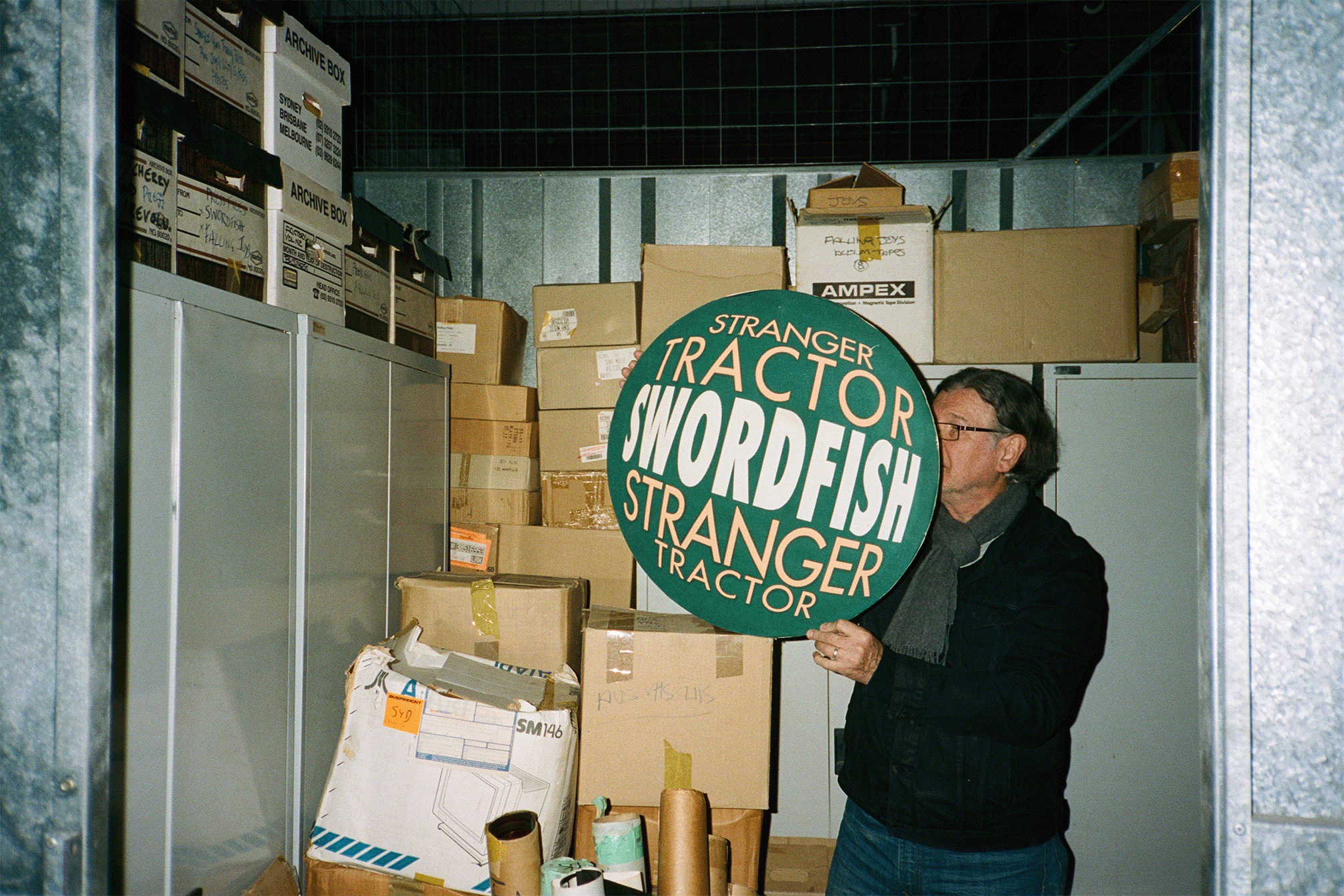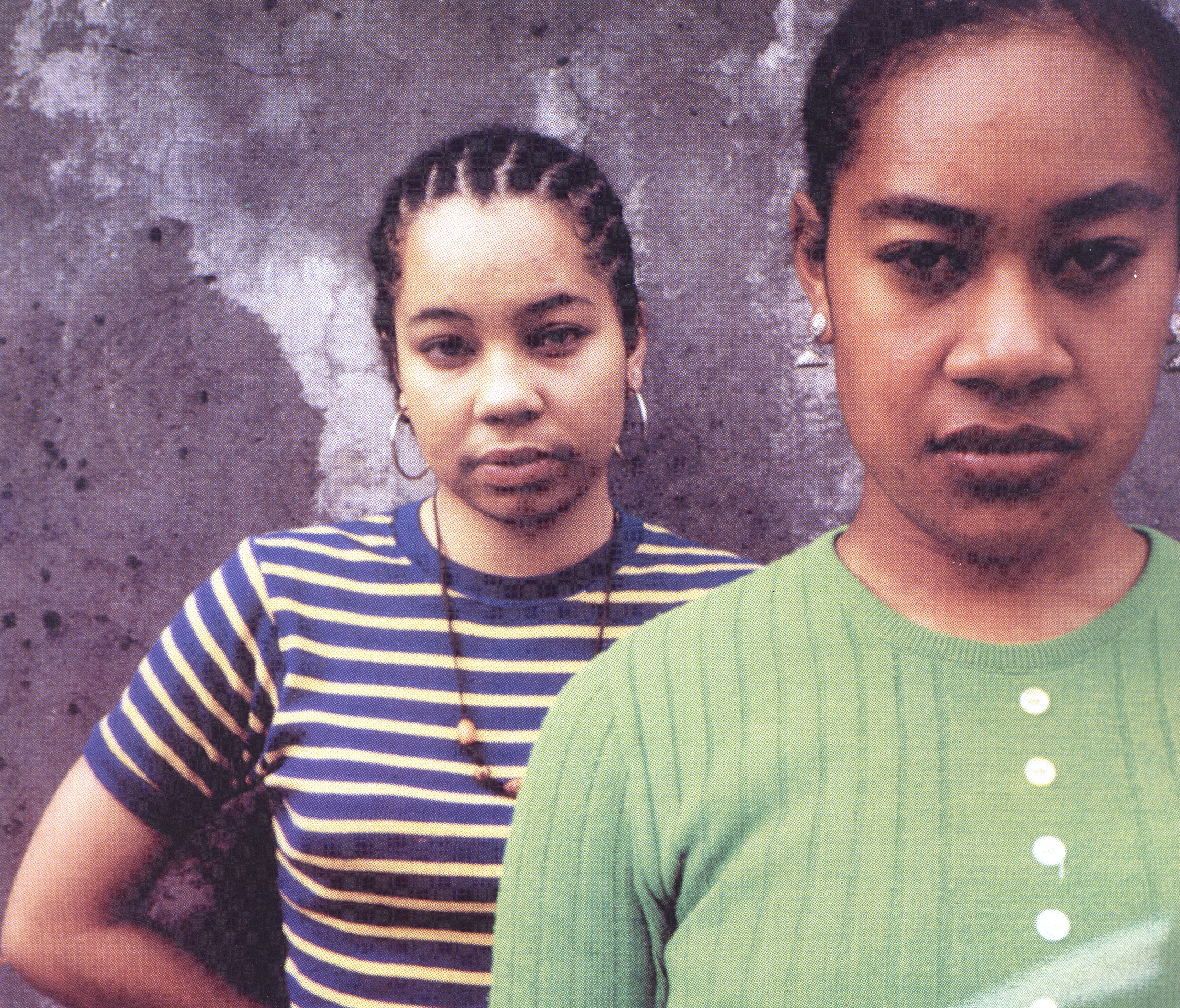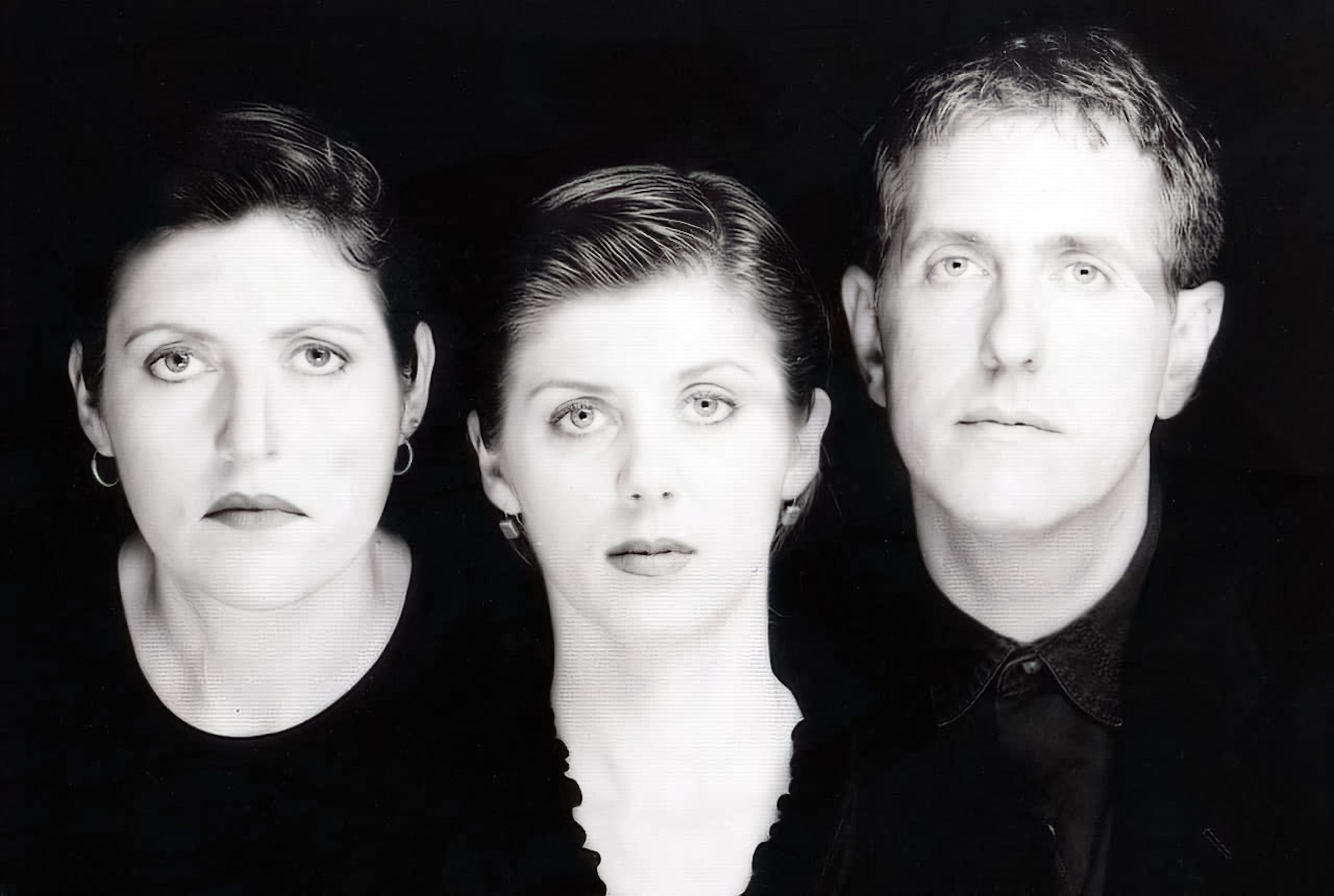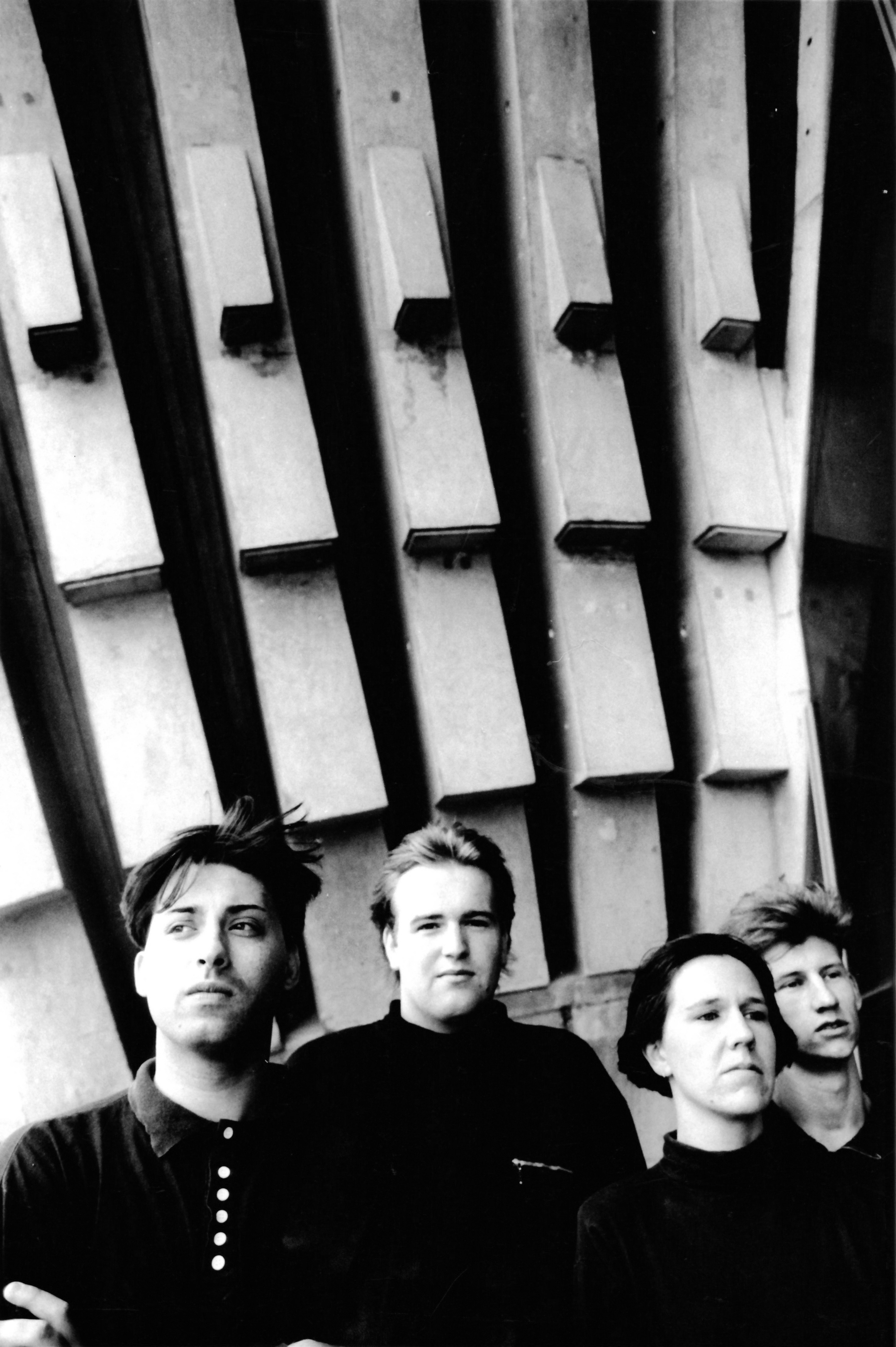 FEATURES
FEATURES
Honouring Volition Records: Australia's club culture catalyst
Martyn Pepperell dives into the history of one of Australia's most influential labels, perfectly timed with Efficient Space's re-release of some of its most important work.
In January 1993, a sixteen-year-old drummer named Kim Moyes headed to the Sydney Showgrounds to attend the second edition of the legendary Big Day Out music festival. Having spent the summer immersing himself in the sounds of early ‘90s alternative and indie rock at a youth music camp, he was pumped to see Iggy Pop, Sonic Youth, Nick Cave & The Bad Seeds, and The Clouds. However, his new friends had a different idea. Instead, they took him to see two era-defining Australian electronica acts perform, Severed Heads and Itch-E and Scratch-E. By the end of the festival, he was changed forever.
“That was my initiation,” Moyes remembers. “I was one of those guys in a band t-shirt who had their mind blown by electronic music.” A decade later, Moyes and fellow Sydneysider Julian Hamilton formed one of the most beloved Australian electronica acts of the 2000s, The Presets. “In a sense, I feel like my whole career came from that experience at the 1993 Big Day Out,” Moyes continues. “It was the perfect synthesis of musical styles.”
By the time The Presets came together, Moyes understood that Severed Heads and Itch-E and Scratch-E were part of a larger Australian musical fraternity, including, but not limited to, Scattered Order, Boxcar, Single Gun Theory, Falling Joys, Robert Racic, Swordfish, Sexing The Cherry, and Vision Four 5. Collectively, they congregated around the Volition record label. Led by the late Andrew Penhallow, Volition played a significant role in the rise of dance music in Australia between 1984 and 1996, while also nurturing some key local indie pop and rock acts.
“Andrew [Penhallow] was integral to the first wave of electronic music here,” notes Paul Mac, one half of Itch-E and Scratch-E alongside Andy Rantzen. “Hearing Severed Heads when I was eighteen years old made me go, right, there’s this thing I’m falling in love with, and it represents a whole new set of possibilities. Later on, we signed with Volition. He helped a lot of us get started.”

PICTURED: ANDREW PENHALLOW, CREDIT: MAX SHAND
A British graphic artist, Penhallow arrived in Sydney in the mid-’70s, before reinventing himself as a music executive in the ‘80s through his GAP Records and Volition ventures. He was also one of the instigating forces behind the Big Day Out’s equally legendary Boiler Room stage. Established sixteen years before the British online music broadcaster and club promotions group of the same name, the Boiler Room was another crucial part of the rise of dance music in Australia.
From 1994 until the festival’s closure twenty years later, countless rock fans followed in Moyes' footsteps as they wandered into the Boiler Room. Hours later, they’d emerge drenched in sweat and converted by world-class talents like The Prodigy, Underworld, Aphex Twin, Fatboy Slim and Peaches. Playing the Boiler Room also helped Brisbane’s DJ BeXta become a breakout talent within Australia’s commercial music landscape. Fittingly, by the mid-2000s, The Presets had joined their ranks. “I’d like to think that experience I had made its way into the DNA of Australian music, and we’re still feeling the effects of it today,” reflects Moyes.
“It’s not immediately apparent, but the first Big Day Out was really just a way of trying to turn a Violent Femmes gig into something more special,” laughs Ben Suthers, aka Boiler Room Ben. “Of course, after the arrival of Nirvana, it exploded, but when you look at the rise and fall of the Big Day Out, it comes down to tribal moments, fashion, and groups coming together.” Suthers got his start in the Volition-signed multimedia dance act Vision Four 5. From there, he spent a stint as a touring production manager with the label’s roster, before working on the backend of the Boiler Room stage. Today, he’s the Managing Director of PIAS Australia.
As Suthers tells it, the Big Day Out’s founder, the late Ken West, didn’t want the festival to only be known for grunge or alternative rock. “They needed to spin it really quickly,” he continues. “There were lots of options for getting into electronic music, but because of house music in Sydney and Andrew Penhallow’s passion and access, it went that way.” Through his roster, Penhallow had access to the only people in Australia who were regularly performing live electronic music. From there, things grew quickly. “By 1996 and 1997, it was mostly down to The Prodigy,” Suthers elaborates. “The Boiler Room didn’t exist without The Prodigy, but it also didn’t exist without Andrew [Penhallow] and Volition.”

PICTURED: SISTERS UNDERGROUND, CREDIT: GREG SEMU
For Naarm/Melbourne DJ, broadcaster, and record label owner Michael Kucyk, Penhallow’s legacy represents a significant document of how Australia’s post-punk generation reinvented itself at the vanguard of dance music in the late 1980s and early 1990s. “The more I thought about GAP, Volition and Andrew [Penhallow], it seemed like a story that needed to be told,” he says. “There are so many subplots like the Boiler Room stage at the Big Day Out, the uniform graphic design sensibilities and the community around the label. Some of these events probably won’t ever be repeated.”
The latest release on Kucyk’s respected boutique label, Efficient Space, Volition Cuts Vol. 1, pays tribute to Penhallow and Volition in fine style. A humble four-track 12” EP, it gathers up an immaculate selection of some of Kucyk’s favourite Volition dance remixes and one original. Presented in a minimalist purple and yellow sleeve, it wouldn’t look out of place in the original catalogue.
Opening the A-Side, the late Sydney DJ, remixer, and producer Robert Racic redubs ‘90s Aotearoa hip-hop/street soul duo Sisters Underground’s evergreen classic ‘In The Neighbourhood’ in a hip-house style. It sits alongside Miami Freestyle hitmaker Tony Garcia’s bubbling version of ‘Lelore’ by Meeanjin/Brisbane (and later Sydney) EBM group Boxcar. On the flip, Sexing The Cherry flows with ‘This Is A Dream’, an uptempo balearic rave track written exclusively for Volition’s seminal High (A Dance Compilation). Afterwards, Single Gun Theory closes things on a high note with Noko 440 and Stuart Crichton’s hypnotic Voyage To The Bottom Of The Dub Remix of their ambient pop anthem ‘Fall’.
“Another kind of extraordinary thing about Volition is that they went through the major label system, but seemed to have this independent freedom that was unparalleled,” Kucyk elaborates. “They were using major label money to get high-profile US producers like Arthur Baker and François Kevorkian to do remixes. The releases had extravagant packaging, and they went hard on the visuals. I don't think there are many successful cases of that.”

PICTURED: SINGLE GUN THEORY, CREDIT: ANDREAS SMETANA
Kucyk first proposed the idea behind Volition Cuts Vol. 1 to Penhallow in 2023. He was receptive and supportive. “We spoke on the phone twice and started exchanging emails,” Kucyk remembers. Tragically, Penhallow passed away not long after from a short, unexpected battle with cancer. “A year later, I reached out to his widow,” Kucyk continues. “We expressed our intentions and she gave us her blessing.”
When Kucyk told me about Volition Cuts Vol. 1, I remembered that in 2020, I interviewed Penhallow while conducting research into the stories behind a seminal mid-'90s Aotearoa hip-hop and swingbeat project, Proud: An Urban-Pacific Streetsoul Compilation. In recent years, it’s come to be considered a cult classic and a time capsule of years gone by.
A collective effort between several crucial ‘90s music industry figures from Sydney and Tāmaki Makaurau/Auckland in Aotearoa, Proud put ten young groups on the map. As part of this, it was ground zero for Sisters Underground, who inked themselves into the classic New Zealand songbook with ‘In The Neighbourhood’, and Otara Millionaires Club. Not long after, Pauly Fuemana from Otara Millionaires Club recorded the global Pacific pop hit ‘How Bizarre' with Proud producer Alan Jansson as OMC.
Presented to the world in 1994, Proud was released through a Volition sublabel, Second Nature. “When I started talking to Al [Jansson], it was obvious that there was a real movement developing in New Zealand,” Penhallow said. “It seemed to me that Proud was overdue and had to be realised.” In addition to sharing his enthusiasm for the compilation, Penhallow recounted some anecdotes from his career to me.
In the late ‘70s and early ‘80s, Penhallow spent a stint as a music reviewer for Rolling Stone Australia and managed the Newcastle post-funk band Pel Mel. Reading the tea leaves of shifting trends, he formed GAP Records with then-Rolling Stone Australia publisher, the late Paul Gardiner, to license material from the seminal UK labels Factory Records and Rough Trade for release in Australia in 1980. By halfway through the decade of decadence, GAP had been consolidated into an Australasian division of Factory Records. Penhallow was still at the helm, but he was also leading Volition.
Several years earlier, Penhallow met a young DJ from Naarm who became a crucial figure within the early Sydney dance music story, Robert Racic. “I worked in Anthem Records in Town Hall Station,” Penhallow remembered. “Robert [Racici] used to come in to buy records. We struck up a conversation and got to know each other.” Not long after, Racic purchased a reel-to-reel recorder and started making tape edits of his favourite club tracks.
When Volition was preparing to release Severed Heads, Racic informed Penhallow that he was a fan and wanted to remix a song. “I said, ‘Sure, let's do it,’” Penhallow enthused. By that stage, Racic already had a bigger vision for himself. Soon enough, he was working on production with Severed Heads, fellow Volition act Boxcar, the Sydney pop group Rockmelons, and even remixing New Order for Factory Records Australasia. “He basically had a mixing and mastering studio set up in his bedroom,” said Penhallow. “Robert worked with the audio engineer Kathy Naunton. They became our in-house production, engineering and mastering people.”
In 2023, Meanjin/Brisbane Volition fan Jody Smith established Volt2023: A Volition Archive, a blog devoted to celebrating the label’s history. In an interview with Smith, Kathy Naunton remembered working with Racic. “Initially, we borrowed or hired whatever we could find and started working out how to create the sound that we liked,” she said. “Then a weird thing happened, word spread. Other inner city artists, similarly driven by the creative madness and seeking “a sound”, would reach out to us to see if we could master their mixes. So around this time, we were simply following the light and not really even aware we were part of something important, something that was going to be talked about in decades to come.”

PICTURED: BOXCAR
Racic’s influence was deeper than just mixing and mastering though. For a generation, his ideas around arrangement were a game-changer. “Robert [Racic] was instrumental in how we started working as Itch-E and Scratch-E,” notes Paul Mac. “We used to write full tracks. One time, we went in with a bigger jam, and Robert [Racic] just edited it down in Pro-Tools. That was a lightbulb moment. The mixes got dubbier, weirder and more experimental, but Robert chopped them into shape. It opened the door for more experimental improvising when we were mixing and dubbing.”
Two years before the launch of the Big Day Out’s Boiler Room stage, Volition released one of their signature projects, High (A Dance Compilation) (1992). Over twenty locally produced electronica tracks, Penhallow and his artist community mapped out a compelling statement of intent for the future of house, techno, trance and downtempo in Australia. “Something I thrive in is bringing scenes to the surface,” Penhallow told me. “Volition was part of a movement in Australia for electronica and dance music. I love those waves, because they’re a basis for change.”
David Smith, one of the driving forces behind Boxcar, has vivid memories of hanging out with Penhallow and the extended Volition community at the label’s single-story terrace house office in Darlinghurst. “You’d go in there, Andrew [Penhallow] would be kicking back at his desk smoking a Silk Cut [cigarette] and they’d always be listening to music,” he says. “It wasn’t unusual to see Robert [Racic], Tom Ellard from Severed Heads, or other DJs. There was a gigantic boom in DJ culture going on at the time, but Volition were really investing time into production.” Reflecting on the post-second summer of love years, he recalls the era as an amazing melting pot. “There were a lot of crossed paths and connections,” Smith says. “The glue that connected us was our passion for music.”
Although she didn’t spend as much time at the office, Jacqui Hunt, lead vocalist of the globally minded downtempo group Single Gun Theory, remembers Volition as a place where artists were free to be themselves. She first crossed paths with the label through Severed Heads, whom she admired for their boundary-breaking approach, bringing experimental electronic sensibilities and a tongue-in-cheek sense of humour to popular music in Australia. “It felt a bit like a dream come true,” she says. “Andrew [Penhallow] was a lovely, patient man. A good producer doesn’t give a lot away. He was measured in how he gave out advice, while making things happen for us.”
In 1996, Volition’s distribution contract with Sony Music Australia expired and Penhallow wound up the label. He took a year off before establishing the Higher Sounds publishing company, focusing more on artist management, freelance A&R, and dipping his toes into early internet radio as a consultant. “Volition were pioneers at every turn and ahead of the curve, but the first person to open the door isn’t necessarily the person who walks through it,” notes Kucyk.
As of late, Kucyk and Efficient Space aren’t the only ones thinking about the importance of this legacy. Last year, Moyes and Revolver resident DJ Mike Callander issued a 30th-anniversary remaster of Itch-E and Scratch-E’s landmark second album, Itch-E Kitch-E Koo, through their H2H Records label. “Halfway through 1993, I started hearing ‘Sweetness and Light’ by Itch-E and Scratch-E on the radio and in record stores,” Moyes says. Over the decades that followed, Itch-E Kitch-E Koo became part of the soundtrack of his life. These days, he appreciates the album’s perfectly balanced blend of ambient, krautrock, acid techno, house, and rave more than ever.
In the late 90s, Moyes befriended Mac at a pre-drinks before a Kevin Saunderson gig. In the early 2000s, he played with him in the live band for The Dissociatives, the alt-rock group Mac formed with Silverchair frontman Daniel Johns, before releasing Mac’s fourth solo album, Mesmerism, through H2H Records in 2019. “Through this long arc of appreciation, we found each other,” Moyes says.
When he realised Itch-E Kitch-E Koo wasn’t on streaming services, Moyes approached Mac and Rantzen about reissuing it. “It felt so necessary,” he enthuses.
“When I was a teenager, these mindblowing musical experiences were all that mattered. I still feel that way, and I think Andrew Penhallow felt that way as well. All the real ones do. You don’t always make a lot of money, but the cultural impact pulsing in the aftershocks is what really matters.”
-
Martyn Pepperell is a freelance journalist, copywriter, broadcaster, photographer and DJ. Find him on Instagram.


